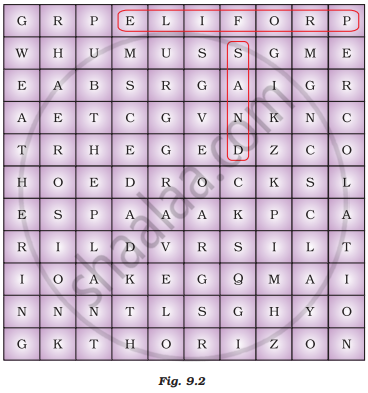Advertisements
Advertisements
प्रश्न
Match the animals in Column I with their natural place of dwelling (habitat) in Column II.
| Column I | Column II | ||
| (a) | Earthworm | (i) | Sand and beaches |
| (b) | Garden lizard | (ii) | Burrows in soil |
| (c) | Crab | (iii) | Deep, narrow holes in dry soils |
| (d) | Rodents | (iv) | Surface of soil |
| (e) | Scorpion | (v) | The surface of shaded moist soils |
| (f) | Snails and slugs | (vi) | A horizon of moist soils |
उत्तर
| Column I | Column II | ||
| (a) | Earthworm | (vi) | A horizon of moist soils |
| (b) | Garden lizard | (iv) | Surface of soil |
| (c) | Crab | (i) | Sand and beaches |
| (d) | Rodents | (ii) | Burrows in soil |
| (e) | Scorpion | (iii) | Deep, narrow holes in dry soils |
| (f) | Snails and slugs | (v) | The surface of shaded moist soils |
APPEARS IN
संबंधित प्रश्न
Explain how soil is formed.
Distinguish between the following pair
Soil erosion and soil conservation
Distinguish between contour tilling and contour bunding.
Form pairs or groups of three or four students and discuss, with examples, how we depend directly and indirectly on soil.
Soil conservation measures are mainly aimed at protecting one of the following?
Unscramble the following jumbled word related to soil.
![]()
Unscramble the following jumbled word related to soil.
![]()
Unscramble the following jumbled word related to soil.
![]()
Unscramble the following jumbled word related to soil.
![]()
Several terms related to soil are hidden in the squares given in Figure 9.2. Spot them and make a list. Two examples are given for you.

